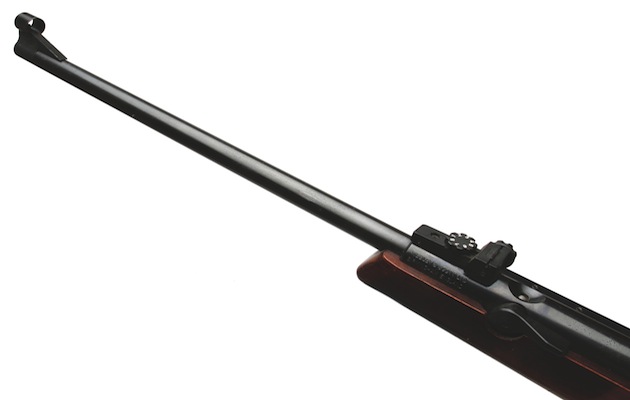Webley Osprey – a classic air rifle
Charles Smith-Jones looks at the Webley Osprey air rifle, one in a series of such guns that set the industry standard of their era and remains a very useable classic air gun

Many of us brought up with air rifles never look back once we get a chance to move on to a rimfire or shotgun. But what a mistake that can be. (Read more on the best airgun pellets.)
Why? Because the right air rifle can be a fantastic tool for controlling small vermin. It’s also excellent for target practice, relatively quiet in use, and its more limited fallout range can make it much more suitable for use around farmyards, gardens or in other restricted areas. On top of all that an air rifle is great fun and cheap to use. (Read buying your first air rifle.)
Originally famous for its revolvers and automatic pistols, arms manufacturer Webley & Scott turned its attention to air rifles in 1926 with the introduction of its Mark 1 model. The company quickly established itself as a market leader and the Mark 1 set the standard for break-barrel spring powered guns. Highly sought after by collectors today, a good example can carry a price tag of several thousand pounds.
Background to the Webley Osprey
The Webley Osprey is one of a long line of models that followed. It was introduced in 1975 and reflected the company’s practice of naming guns after birds of prey. Originally produced as a follow-up to Webley’s underlever Mark 3 air rifles that ceased production in the same year, it was intended for the serious hunter but proved so popular that a target version soon followed.
This is no child’s model but a full-size air rifle that has excellent balance with the heft of a full-bore. Overall the appearance is functional but attractive. The beech furniture of the standard version is stained to mimic walnut and is fairly plain, but the Deluxe model features a chequered walnut stock. As there is no need for a cut-out underneath the fore-end to accommodate a break-barrel mechanism the impression of a ‘real’ rifle is much enhanced, and the overall feel is that of a solid and well-constructed gun.
A hooded single blade foresight sits at the end of the muzzle and the fully adjustable rear sight is fixed to the receiver just in front of the loading port. There are scope rails to accommodate a telescopic sight if desired. The single-stage trigger can be adjusted downwards to around 3lb using a standard Allen key via an access point at the top of the air receiver.
Loading
Loading is simple. A plastic lever on the left of the receiver enables a pellet to be dropped, head first, into the loading port. Closing the lever rotates and aligns the pellet between the piston and barrel, and two piston rings complete the seal. To cock the mechanism, a small button on the top of the side-lever releases it to be ratcheted down until the trigger engages. A manual safety catch allows the user to disable the action.

The loading port with plastic lever and adjustable rear sight
Speed limit
A Webley Osprey in factory condition delivered a velocity of around 650fps (.177) or 550fps (.22). Even with very fine tuning you would be unlikely to achieve a muzzle energy of anything over 10ft/lb so this air rifle falls well below the legal maximum for ‘off ticket’ rifles. This may seem low in comparison to some more modern air rifles that are designed to sit just below the 12ft/lb legal limit, but it is still more than sufficient to despatch quarry up to the size of a rabbit at sensible ranges. (Read more on rabbiting with air rifles.)
On top of this, the Osprey is very accurate and does not produce the recoil levels often associated with some other springers. This is largely thanks to a longer than usual spring that sits within an equally long receiver. The spring length means that it is never fully compressed once put under tension. This ensures that it is not overworked and that consistent velocities are maintained.
The fixed barrel also minimises vibration and further enhances accuracy. Though not overly noisy, there is inevitably some spring noise on firing.
Anyone considering an air rifle for fun shooting or light pest control duties could do a great deal worse than an Osprey. It is true that it may feel a little long and heavy in comparison to other guns of its type, but its accuracy and robust construction make up for this. A used Osprey that has been properly looked after can represent a lot of air rifle at a very sensible price.
Tech specs
- Country of origin: UK
- Action: Spring powered, side-lever
- Stock options: Beech or walnut (Deluxe model)
- Overall length 43½in
- Barrel length 19½in
- Magazine: None
- Left hand version: No
- Weight (bare): 7lb 12oz
- Available in calibres .177in and .22in
- Cost new: N/A
- Cost used: From around £100 for a good useable gun, but more as quality increases – a mint example in original packing might cost in the region of £350 to £400
Verdict
A used Osprey that has been properly looked after can represent a lot of air rifle at a very sensible price.










